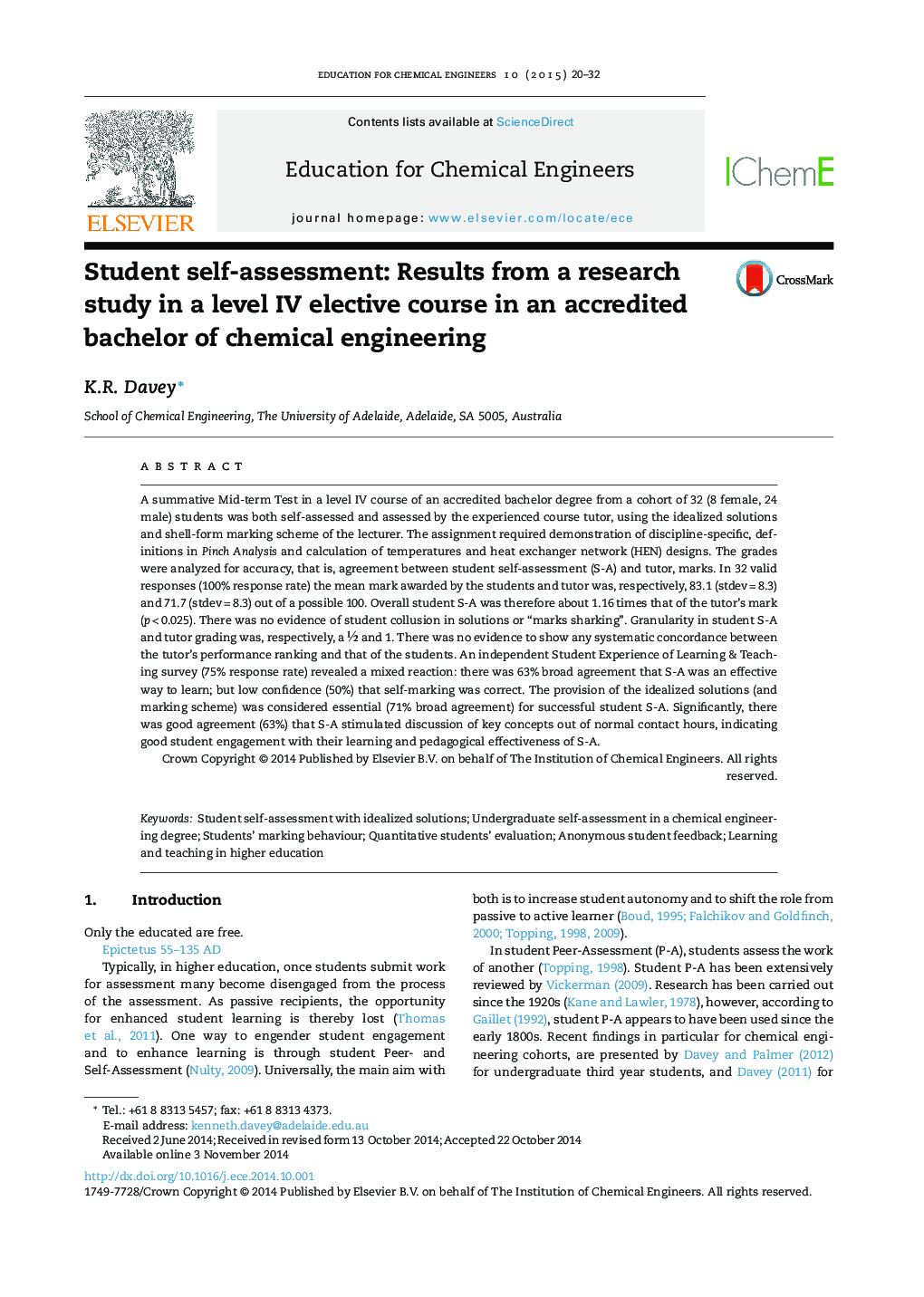| کد مقاله | کد نشریه | سال انتشار | مقاله انگلیسی | نسخه تمام متن |
|---|---|---|---|---|
| 178481 | 459279 | 2015 | 13 صفحه PDF | دانلود رایگان |
• Tutor- and student self-marking with idealized solutions of lecturer.
• Significant difference (p < 0.025) between tutor- and self-assessed grades.
• Students self-mark 1.16 times greater overall than tutor.
• No evidence of student collusion in solutions and in awarding self-marks.
• Student experience mixed on effectiveness of self-assessment learning.
A summative Mid-term Test in a level IV course of an accredited bachelor degree from a cohort of 32 (8 female, 24 male) students was both self-assessed and assessed by the experienced course tutor, using the idealized solutions and shell-form marking scheme of the lecturer. The assignment required demonstration of discipline-specific, definitions in Pinch Analysis and calculation of temperatures and heat exchanger network (HEN) designs. The grades were analyzed for accuracy, that is, agreement between student self-assessment (S-A) and tutor, marks. In 32 valid responses (100% response rate) the mean mark awarded by the students and tutor was, respectively, 83.1 (stdev = 8.3) and 71.7 (stdev = 8.3) out of a possible 100. Overall student S-A was therefore about 1.16 times that of the tutor's mark (p < 0.025). There was no evidence of student collusion in solutions or “marks sharking”. Granularity in student S-A and tutor grading was, respectively, a ½ and 1. There was no evidence to show any systematic concordance between the tutor's performance ranking and that of the students. An independent Student Experience of Learning & Teaching survey (75% response rate) revealed a mixed reaction: there was 63% broad agreement that S-A was an effective way to learn; but low confidence (50%) that self-marking was correct. The provision of the idealized solutions (and marking scheme) was considered essential (71% broad agreement) for successful student S-A. Significantly, there was good agreement (63%) that S-A stimulated discussion of key concepts out of normal contact hours, indicating good student engagement with their learning and pedagogical effectiveness of S-A.
Journal: Education for Chemical Engineers - Volume 10, January 2015, Pages 20–32
